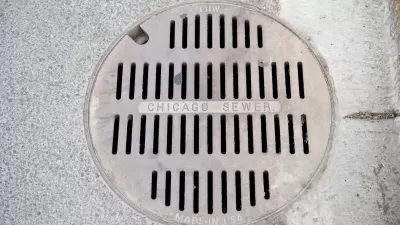The Clean Water Act turns 40 this week. For Mark Gold, this calls for a celebratory overview of the many environmental successes it has produced, as well as careful consideration of the steps needed for it to be effective in years to come.
The Clean Water Act "sets wastewater standards and regulates the discharge of pollutants into the nation's oceans, rivers and lakes", says Mark Gold, former president of Heal the Bay and associate director of UCLA's Institute of The Environment and Sustainability, in a recent editorial piece published in the Los Angeles Times. Yet, "without a more comprehensive federal approach to water management, the nation's aquifers, rivers, lakes and coastal waters will continue to degrade."
According to Gold, the Clean Water Act has been responsible for a myriad of successes locally in Los Angeles County, as well as nationally, in no small part due to collaboration amongst diverse stakeholders from both the public and private sectors. He asserts, however, that although the act has led to cleaner, safer and healthier beaches for aquatic life, swimmers and surfers, it still has a long way to go before achieving what Congress envisioned 40 years back.
Gold points to the fact that the act cannot create "universally fishable, swimmable and drinkable waters," as Congress initially foresaw. He adds that pollution from agriculture, mining and timber industries, as well as from septic systems are largely unregulated, and that storm-water management also needs to be strengthened.
Some of these improvements require minor revisions to the existing rules mandated in the Act, but others require congressional action and bipartisan support. Gold challenges Congressional representatives to listen to Americans' concerns about water quality, and to work harder to meet the act's initial aspirations.
FULL STORY: Refreshing the Clean Water Act

Alabama: Trump Terminates Settlements for Black Communities Harmed By Raw Sewage
Trump deemed the landmark civil rights agreement “illegal DEI and environmental justice policy.”

Planetizen Federal Action Tracker
A weekly monitor of how Trump’s orders and actions are impacting planners and planning in America.

The 120 Year Old Tiny Home Villages That Sheltered San Francisco’s Earthquake Refugees
More than a century ago, San Francisco mobilized to house thousands of residents displaced by the 1906 earthquake. Could their strategy offer a model for the present?

In Both Crashes and Crime, Public Transportation is Far Safer than Driving
Contrary to popular assumptions, public transportation has far lower crash and crime rates than automobile travel. For safer communities, improve and encourage transit travel.

Report: Zoning Reforms Should Complement Nashville’s Ambitious Transit Plan
Without reform, restrictive zoning codes will limit the impact of the city’s planned transit expansion and could exclude some of the residents who depend on transit the most.

Judge Orders Release of Frozen IRA, IIJA Funding
The decision is a victory for environmental groups who charged that freezing funds for critical infrastructure and disaster response programs caused “real and irreparable harm” to communities.
Urban Design for Planners 1: Software Tools
This six-course series explores essential urban design concepts using open source software and equips planners with the tools they need to participate fully in the urban design process.
Planning for Universal Design
Learn the tools for implementing Universal Design in planning regulations.
Clanton & Associates, Inc.
Jessamine County Fiscal Court
Institute for Housing and Urban Development Studies (IHS)
City of Grandview
Harvard GSD Executive Education
Toledo-Lucas County Plan Commissions
Salt Lake City
NYU Wagner Graduate School of Public Service





























